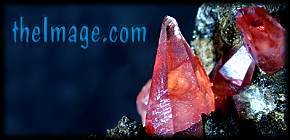
|
|
|||
|
Name: |
chlorargyrite |
|
|||
|
Class: |
Halides |
||||
|
Chemistry: |
AgCl Silver Chloride |
||||
|
Color(s): |
colorless, pearly gray to brown, decomposes to violet or black upon exposure to sunlight streak: white |
||||
|
Hardness: |
2.5 |
SpecGrav: |
5.5 - 5.6 |
||
|
Fracture: |
uneven |
Cleavage: |
perfect |
||
|
Crystal: |
isometric (crystals are somewhat rare as it decomposes easily to a powdery crust. Cubes are a common crystal habit when present) |
||||
|
Envronment: |
alteration zone in epithermal veins, and hydrothermal replacement deposits |
||||
|
Association: |
acanthite, barite, fluorite, calcite |
||||
|
Locals: |
| Nevada, Calif., Idaho, USA | Chile | Germany | Bolivia | Peru | England | France | Australia | |
||||
|
Misc: |
The name is derived from the Greek word "argyros", meaning "silver", not from the element, but from the silvery sheen of the minerals luster. "Chlor" does come from the elemental halide name, chlorine. |
||||
|
Photos |
|||||
|
1.) Soda Mtns., San Bernardino, Calif. |
3.) Soda Mtns., San Bernardino, Calif. |
||||
|
|
|
|
|
|
|
|
|
|